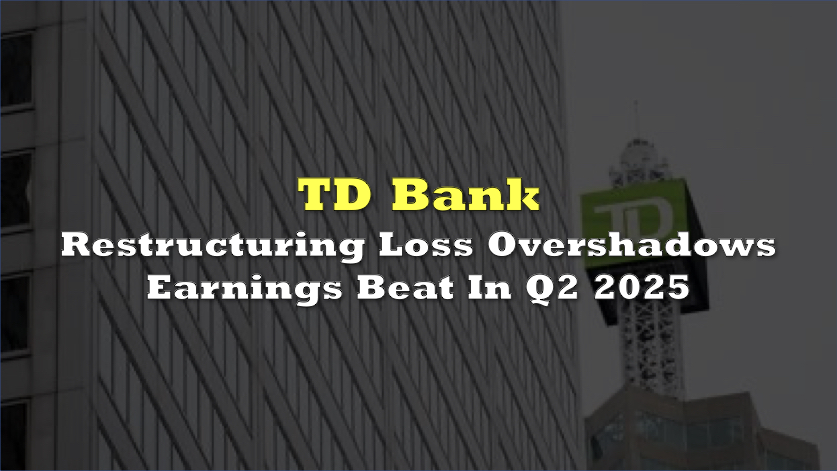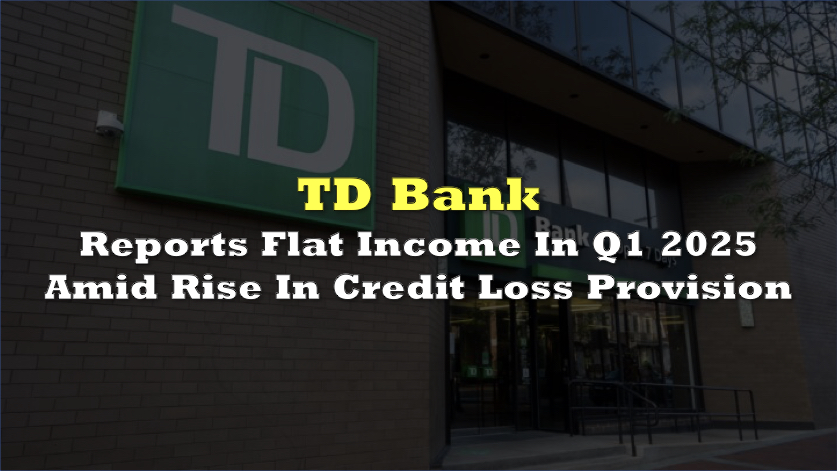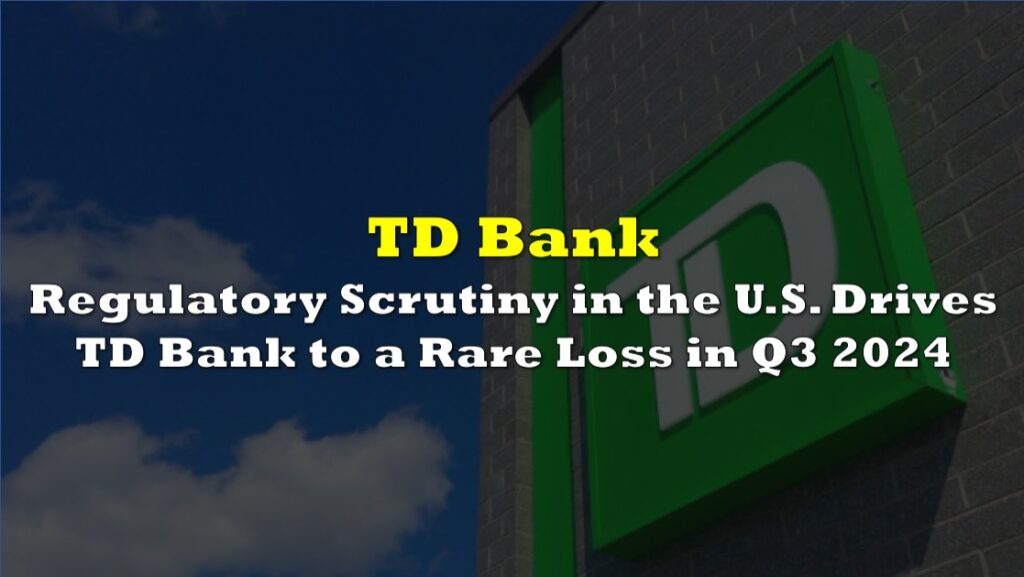TD Bank Group (TSX: TD) reported a staggering 334% year-over-year increase in reported Q2 2025 net income to $11.13 billion, primarily driven by an $8.57 billion after-tax gain from the sale of its remaining stake in Charles Schwab.
However, stripped of this one-time windfall, adjusted net income fell 4% to $3.63 billion from $3.79 billion a year earlier, signaling persistent underlying challenges—most notably a costly US balance sheet overhaul and pressure in core retail operations.
Reported diluted earnings per share skyrocketed to $6.27 from $1.35 in Q2 2024. However, adjusted diluted EPS dropped to $1.97 from $2.04—while beating the analysts’ estimate of $1.76 per share, marked the second consecutive quarterly decline. The adjusted return on equity also dipped to 12.3% from 14.5% in Q2 last year, while the adjusted return on tangible common equity fell to 15.0% from 19.2%.
Total reported revenue in Q2 2025 rose to $22.94 billion, up from $13.82 billion in the same quarter last year, driven by non-interest income of $14.81 billion—more than doubling the $6.35 billion recorded a year ago due to the Schwab gain. Adjusted revenue was $15.14 billion, up 9% from $13.88 billion in the prior year.
Net interest income rose 9% year-over-year to $8.13 billion from $7.47 billion, while adjusted net interest income climbed to $8.21 billion from $7.53 billion.
Provision for credit losses surged to $1.34 billion, a 25% increase from $1.07 billion in Q2 2024.
In Canadian Personal and Commercial Banking, revenue rose 3% year-over-year to $4.99 billion, while net interest income improved 6% to $4.02 billion and non-interest income fell 6% to $968 million. However, net income dropped 4% to $1.67 billion from $1.74 billion a year ago, primarily due to higher PCL and increased non-interest expenses. PCL in this segment jumped 33% to $622 million, with impaired PCL up 8% to $428 million and performing PCL surging 77% to $194 million. Non-interest expenses rose 5% to $2.05 billion.
Reported US revenue dropped 28% to US$1.83 billion from US$2.54 billion, while adjusted revenue rose modestly to US$2.62 billion from US$2.54 billion.
TD’s US Retail Bank posted reported net income of just $120 million, a 76% collapse from $507 million in the prior-year quarter. Excluding Schwab-related earnings, the US Retail Bank’s standalone net income was a mere $42 million, down 87% from $324 million. Adjusted net income from the entire US Retail segment, including Schwab, was $967 million, a 19% decline from $1.20 billion.
The US segment was heavily impacted by a series of restructuring efforts that included selling approximately US$19 billion of bonds and US$8.6 billion in residential mortgage loans. These moves, part of a broader effort to shrink the US balance sheet, have so far resulted in US$1.67 billion in pre-tax losses—or US$1.25 billion after tax—since the program began in October 2024. TD expects up to US$1.5 billion in total after-tax losses from the initiative.
In Wealth Management and Insurance, net income climbed 14% year-over-year to $707 million, with revenue jumping 12% to $3.50 billion, net interest income climbing 19% to $362 million, and non-interest income up 12% to $3.14 billion.
Wholesale Banking reported net income of $419 million, a 16% increase year-over-year. Revenue hit a record $2.13 billion, up 10%, driven by trading revenue and $184 million in underwriting fees from the Schwab share sale.
TD’s Corporate segment posted a reported net income of $8.22 billion, compared with a loss of $664 million a year earlier. Adjusted for one-time items including the Schwab gain, the segment reported a loss of $161 million versus a $211 million loss last year.
TD’s Common Equity Tier 1 capital ratio surged to 14.9% from 13.4% a year ago, driven by the capital released from the Schwab sale again.
In addition, the bank’s multi-year AML overhaul remains a drag on expenses and governance resources, with roughly US$500 million in compliance costs expected annually through 2026.
In addition to its financial restructuring efforts, TD Bank has announced a significant workforce reduction as part of its broader cost-cutting strategy. The bank plans to lay off approximately 2,000 employees, representing about 2% of its global workforce. This move is aimed at streamlining operations and is expected to result in annual savings of up to $650 million.
This strategic shift follows the appointment of Raymond Chun as CEO in February 2025, who initiated a comprehensive review of the bank’s operations to simplify its business model and enhance efficiency. The bank has not specified the geographic distribution of the layoffs but it is said to involve the closure of 38 branches across 10 US states and Washington, D.C., scheduled for June 5, 2025.
TD last traded at $89.90 on the TSX.
Information for this briefing was found via CP24, Sedar, and the sources mentioned. The author has no securities or affiliations related to this organization. Not a recommendation to buy or sell. Always do additional research and consult a professional before purchasing a security. The author holds no licenses.









